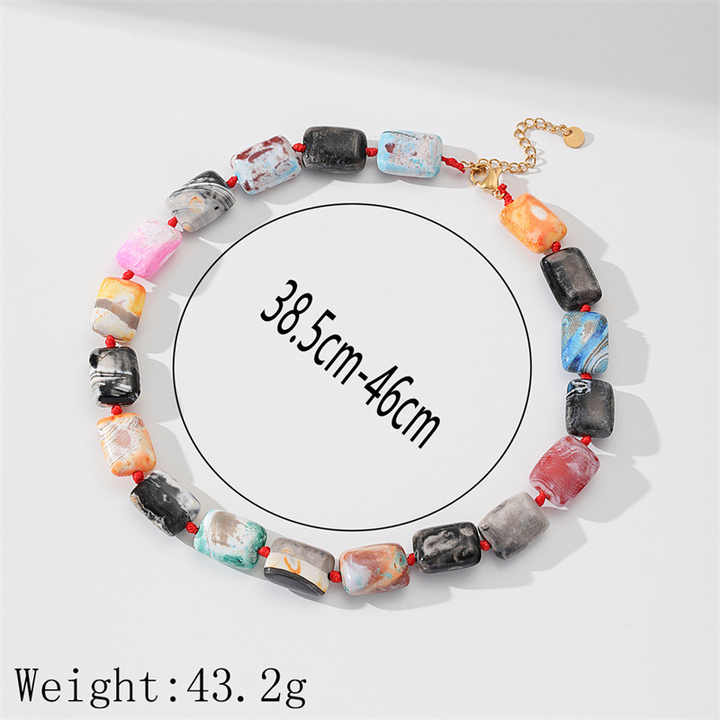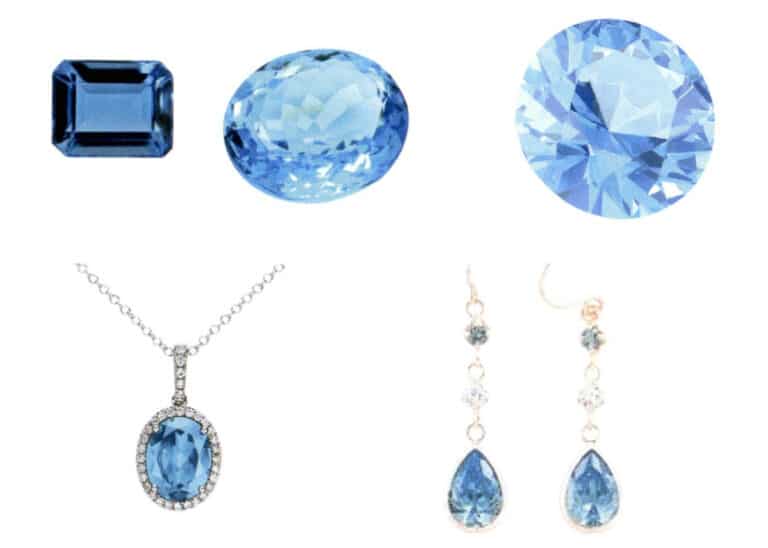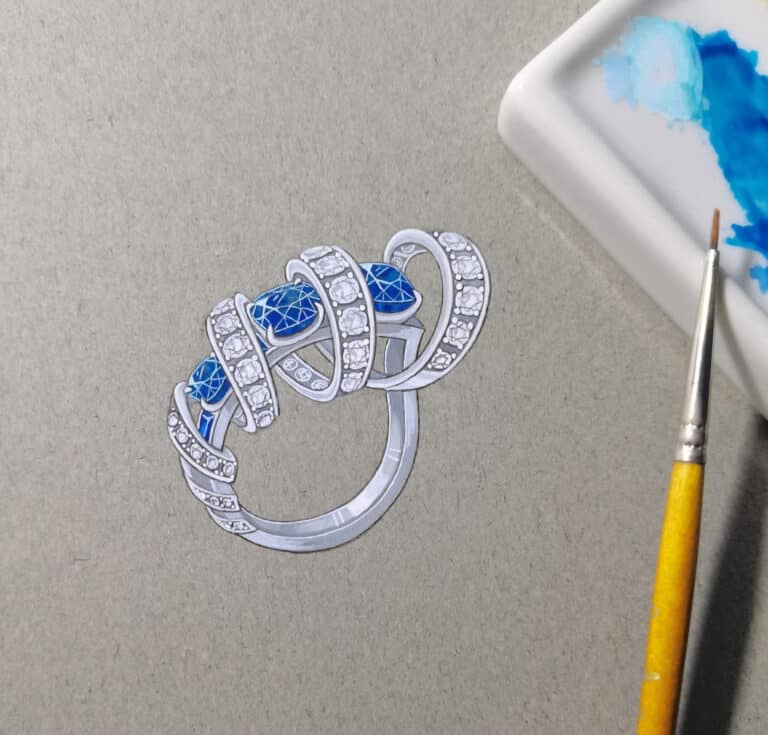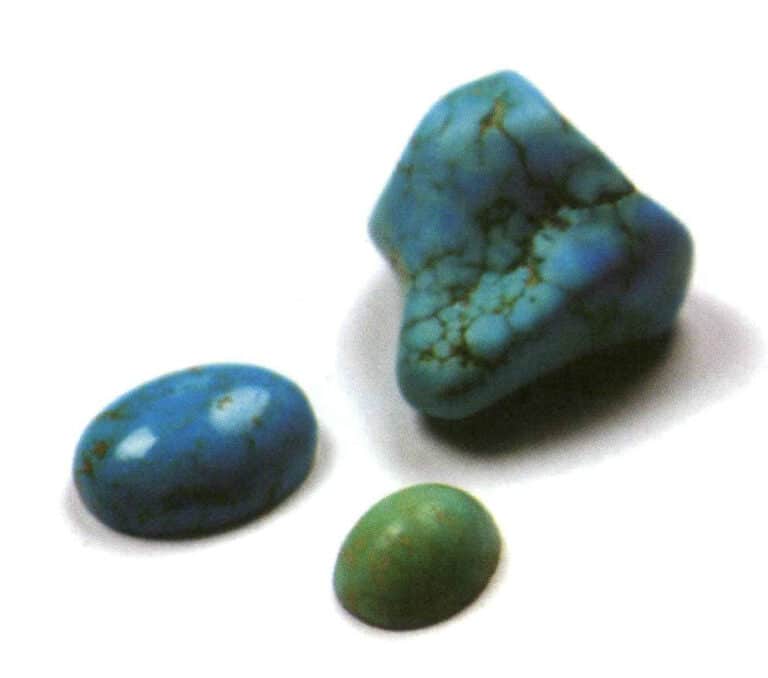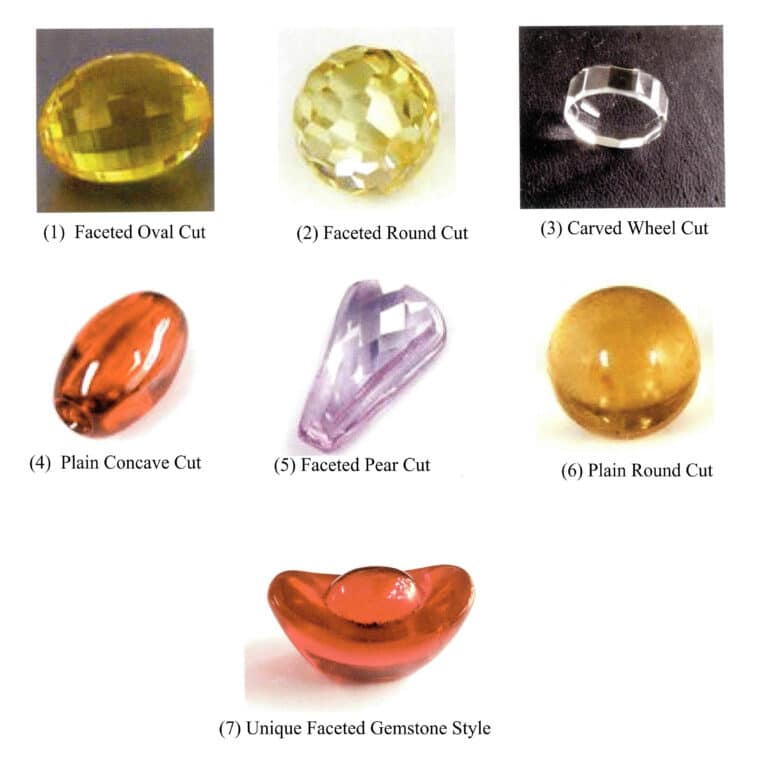ジュエリーについて知っておくべきこと:コンセプト、種類、ケア、トレンド、デザイン?
Ultimate Guide to Jewelry Knowledge for Designers and Retailers
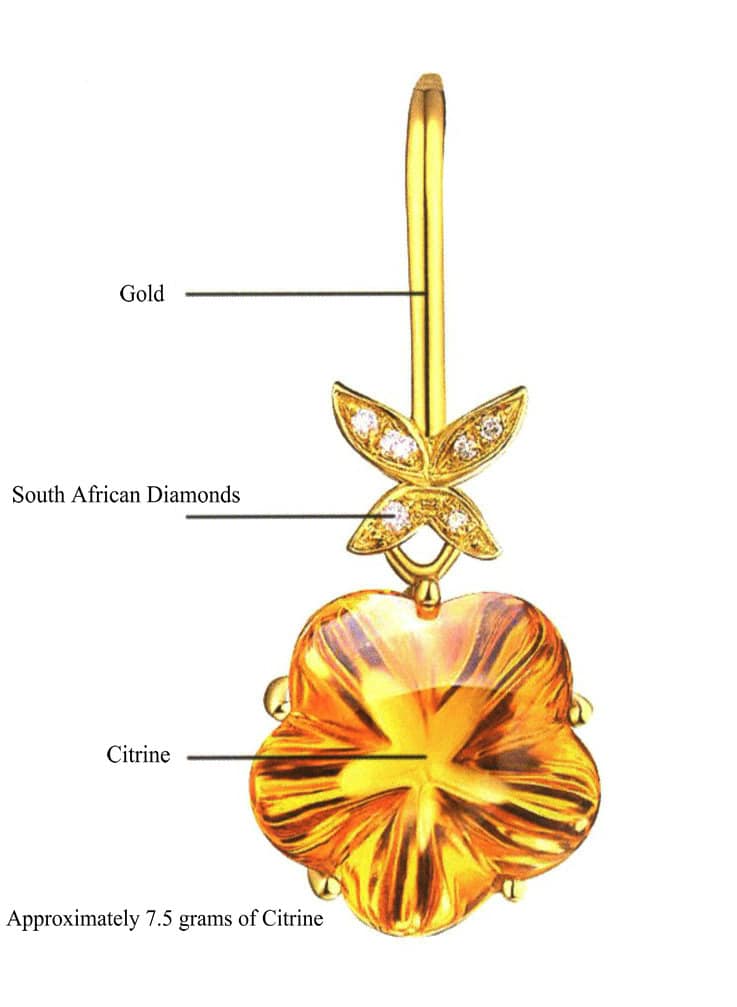
目次
Section I The Concept of Jewelry
Gemstones are mineral crystals formed by geological processes in nature. Due to their beautiful and rich colors, as well as their hardness and durability, they can be used to create exquisite jewelry or crafts. Gemstones are generally divided into two main types: natural and synthetic. Because high-quality natural gemstones are scarce and expensive, people use modern technology and craftsmanship to produce synthetic gemstones. Nowadays, synthetic gemstones can be mass-produced cheaply, and their quality is comparable to natural gemstones.
Jewelry refers to various decorative items from precious gemstones processed through grinding, carving, setting, and stringing techniques, such as necklaces, rings, earrings, and bracelets.
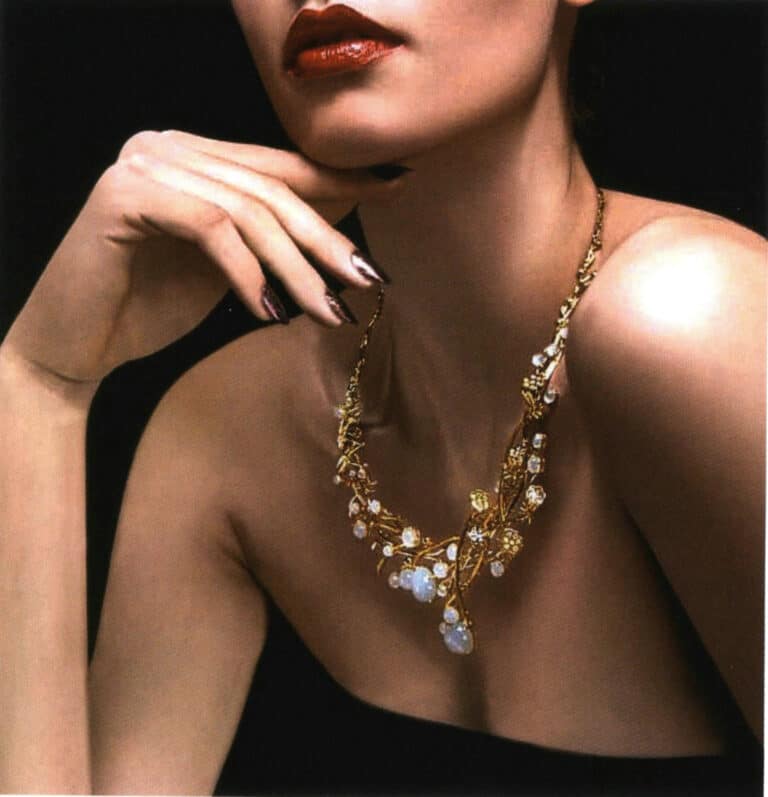
Section II Common Types of Jewelry
1. Earring
Earrings are accessories worn on the ears that can reflect feminine beauty. Due to the different styles, lengths, and shapes of earrings create varying visual effects, so choosing them based on the occasion, outfit coordination, and hairstyle is necessary.
一般的なイヤリングには、スタッド、ドロップ、フープ、クリップなどがあり、形や素材もさまざま。宝石や金や銀をはめ込んだ典型的なイヤリングに加え、プラスチック、大理石、陶器、布などの素材を使ったイヤリングも人気が高い。次に、イヤリングの素材、サイズ、品質、一般的なスタイルや形についてご紹介します。

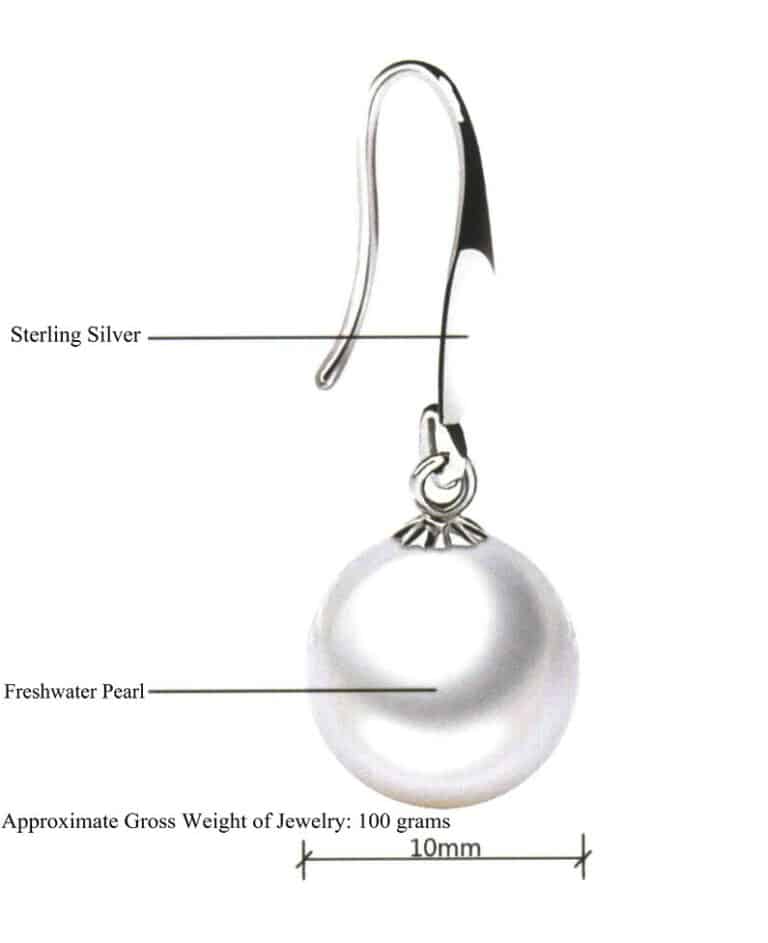
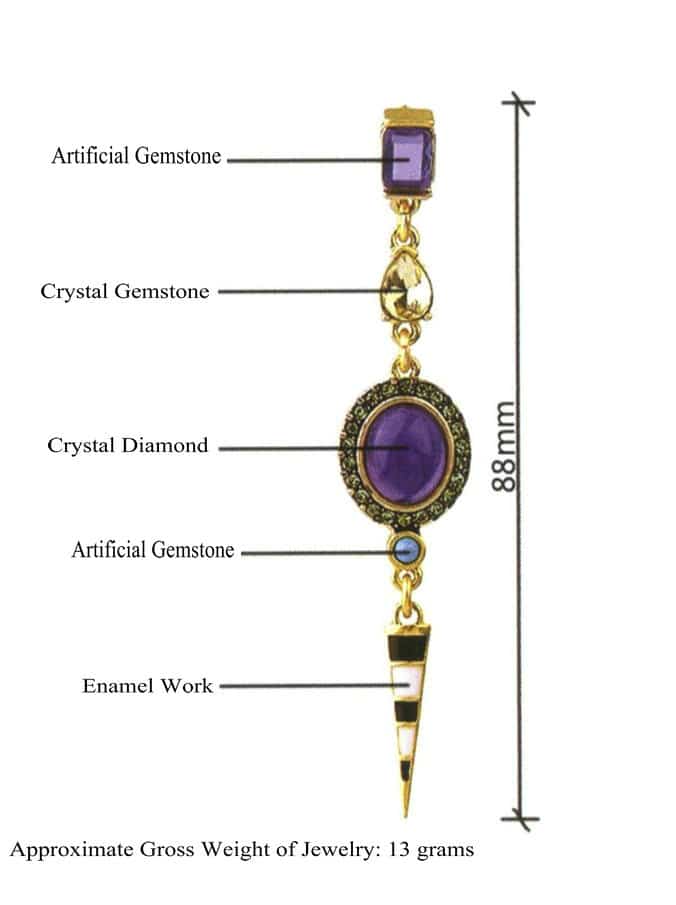
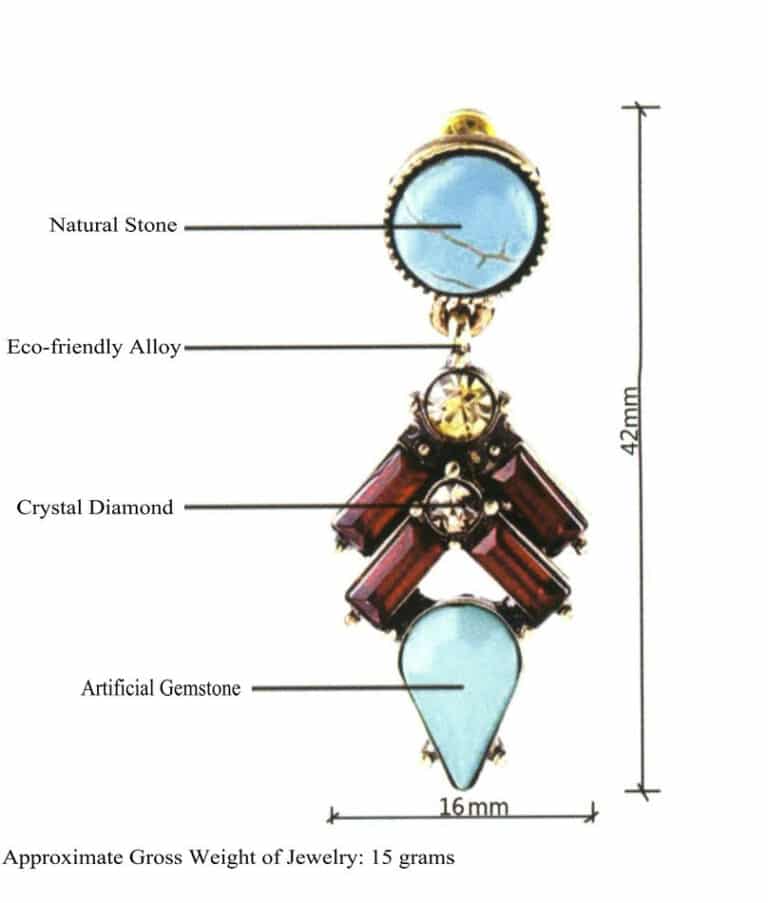
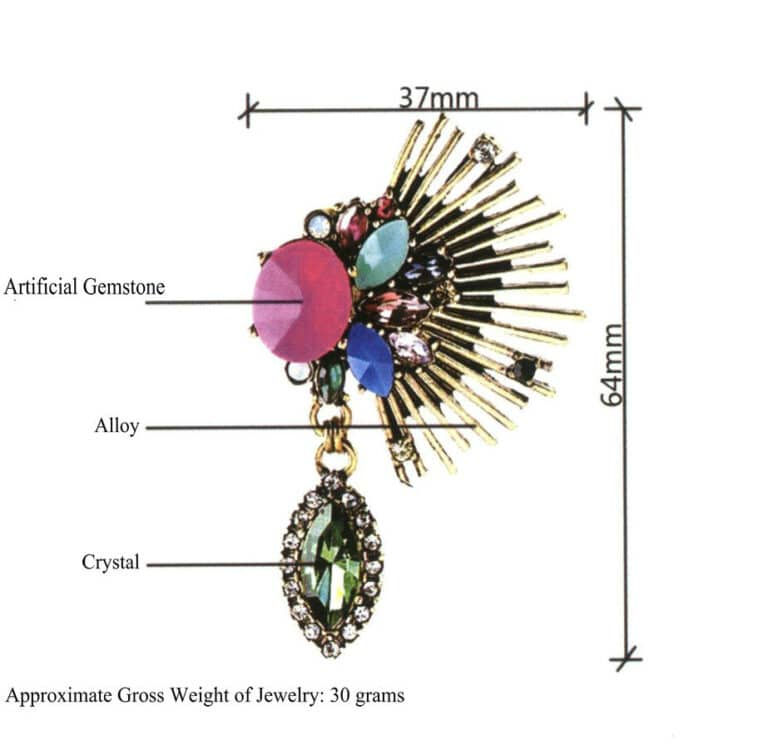
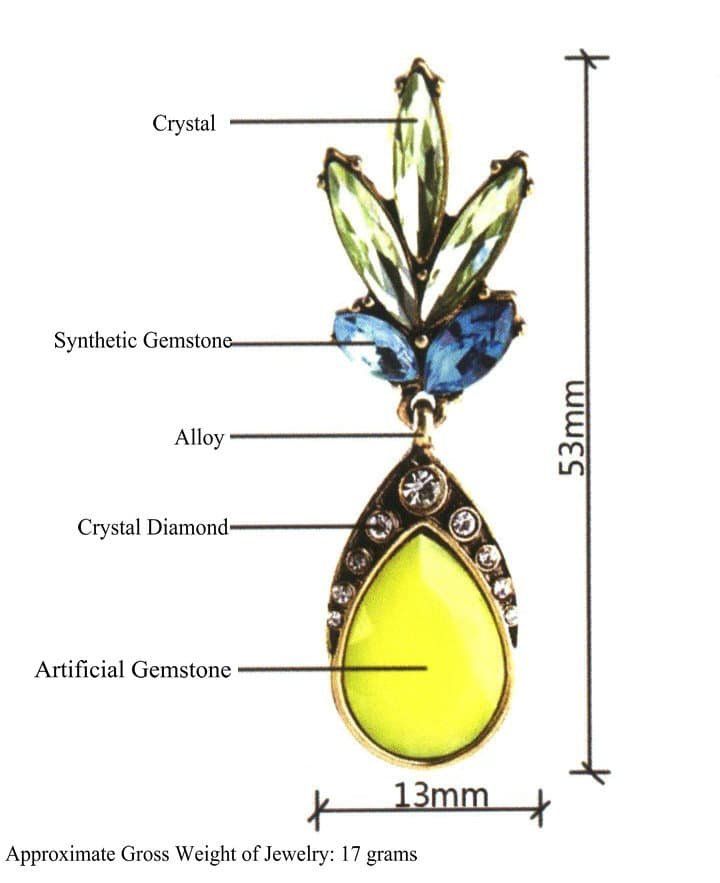


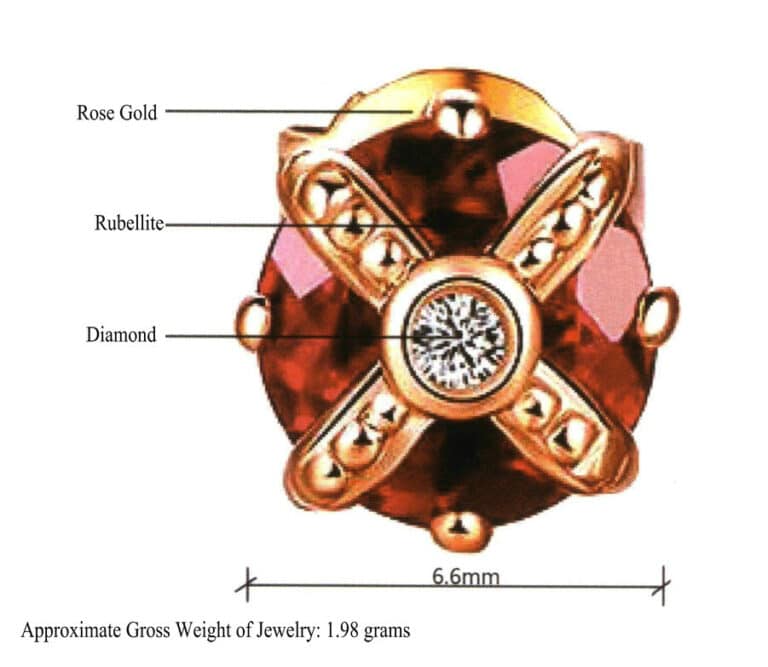
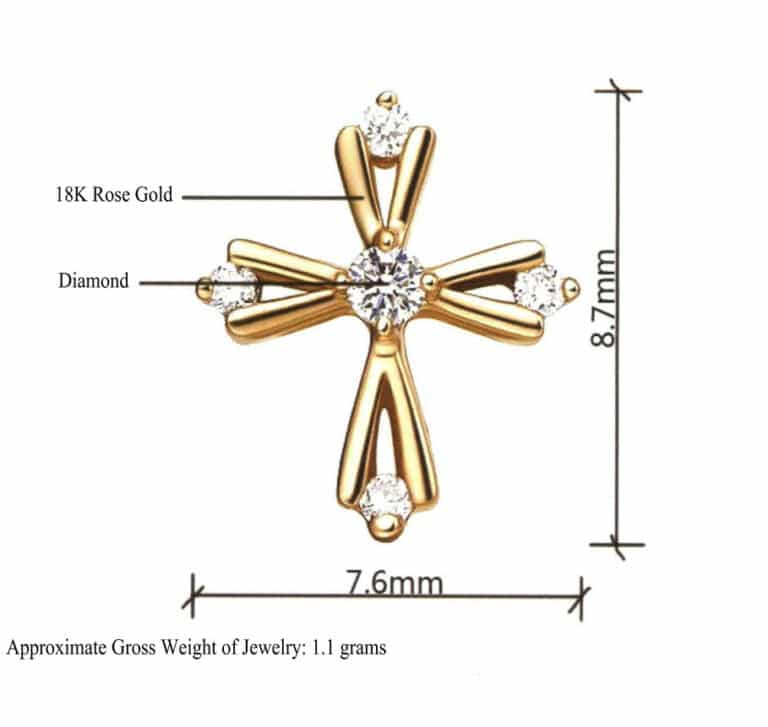
Earring matching tips: People with larger face shapes should avoid wearing round earrings, while larger earrings in triangular or teardrop shapes are the best choice. They can reduce the width of the cheeks and visually elongate the face; people with square faces should choose floral, heart-shaped, or oval earrings to soften the facial lines and effectively modify the face shape; those with long faces need to reduce the visual depth of the face, so styles that are close to the ear, such as round, button, or stud earrings, are the best choice; people with oval faces are suitable for teardrop or triangular earrings that are wider at the bottom and narrower at the top; round-faced individuals should not only avoid wearing round earrings, but the size of the earrings should also be proportionate to the size of the face. Angular, zigzag, leaf-shaped, or pointed earrings can create a lengthening effect and are the best choice.
2. Necklace
Necklaces are decorative items for the neck, and different materials, shapes, and colors of necklaces can express different aspects of a woman’s personality, such as status, cultivation, and preferences. Necklaces include many types, such as scarves, bow ties, collar flowers, and pendants, while jewelry necklaces mainly consist of necklaces, pendants, and sweater chains. These accessories that hang around the neck are dynamic and spatial, giving a sense of lightness and can express the image and temperament of the wearer.
Next, we will introduce the materials, sizes, quality, and common styles of gemstone necklaces.
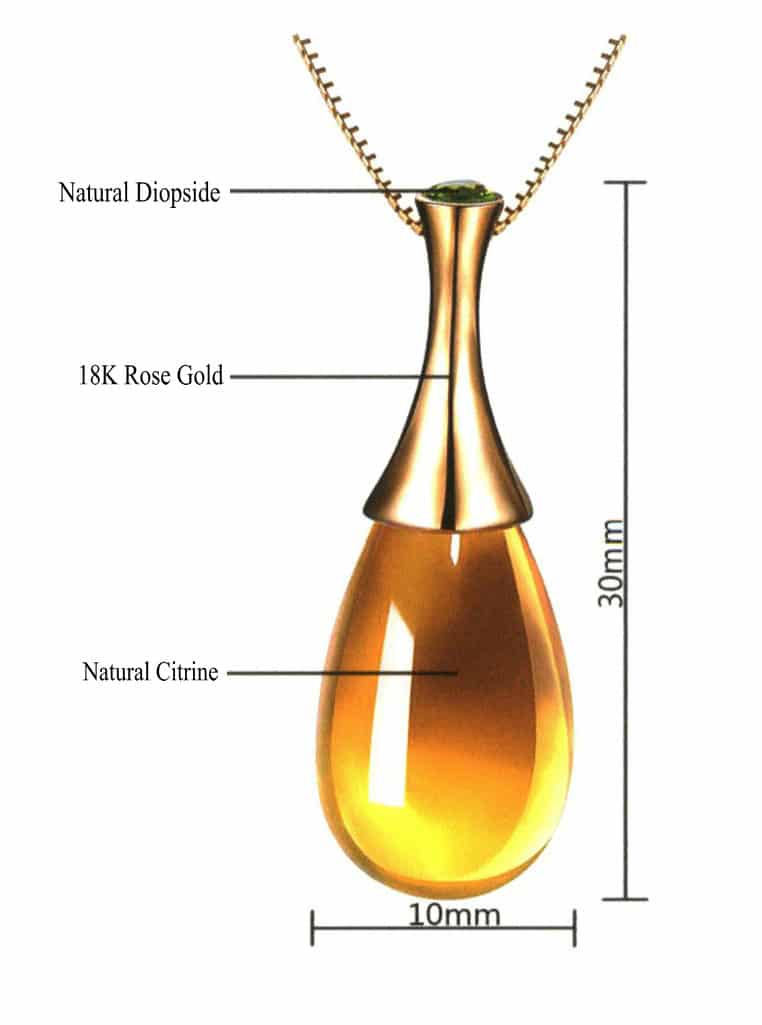
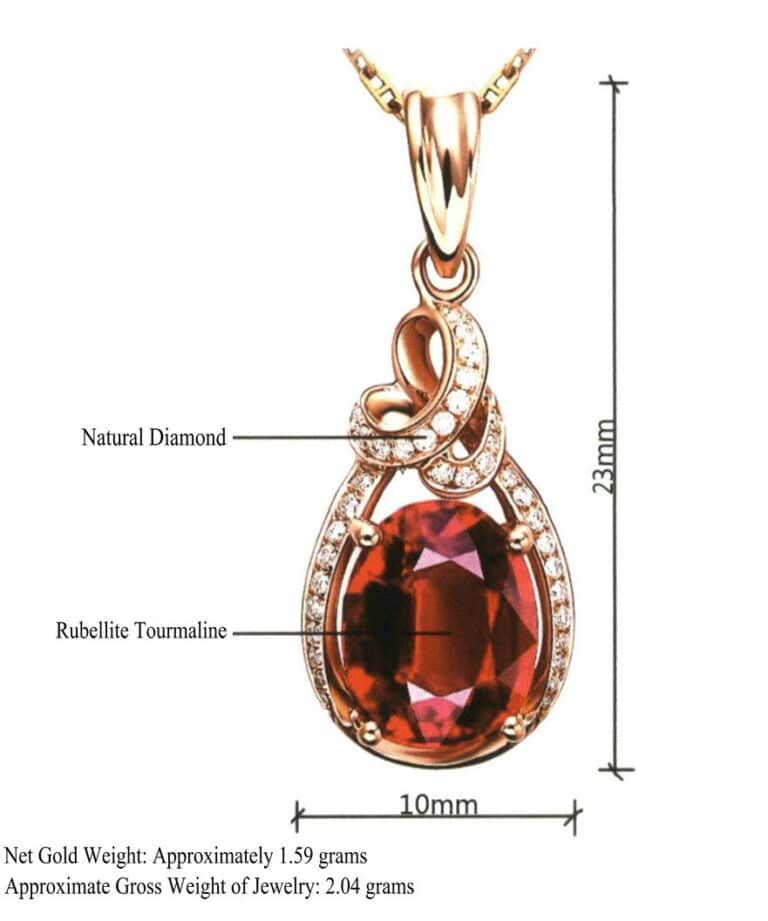



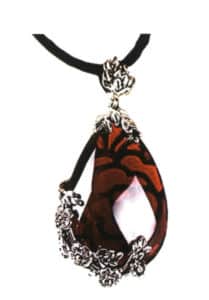
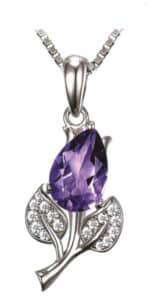
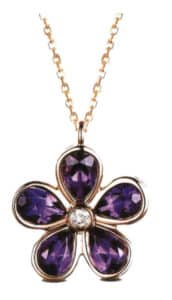
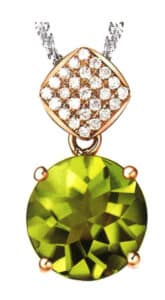
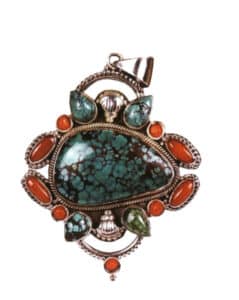

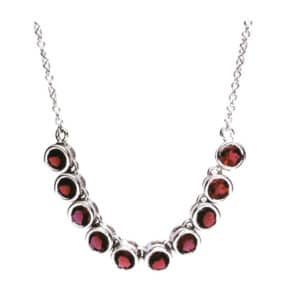
Necklace matching tips: Women with thick necks should avoid wearing chunky, exaggerated styles; women with short necks should avoid complex, brightly colored styles; women with round faces should avoid styles with strong angles and lines.
3. Ring
A ring is a piece of jewelry worn on the finger, suitable for any adult. How a ring is worn can have many meanings and should be considered carefully. There are many types of ring materials, such as metal, gemstones, plastic, wood, bone, and ceramic, with setting methods mainly including prong setting, bezel setting, channel setting, and pavé setting. Women’s rings are generally more luxurious and ornate, while men’s rings tend to be simpler; the choice should be based on personal temperament and preferences to select the most suitable style.
Next, we will introduce the materials, sizes, quality, and common styles of gemstone rings.
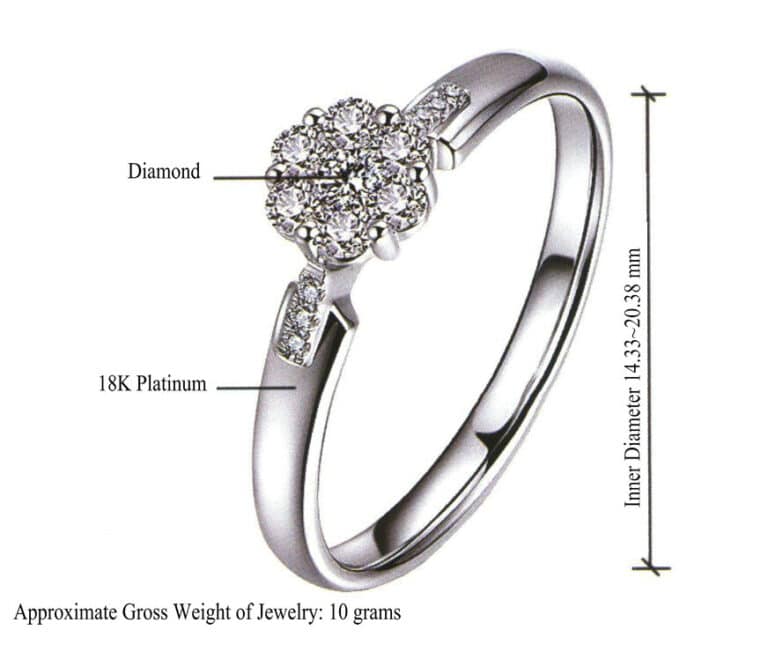
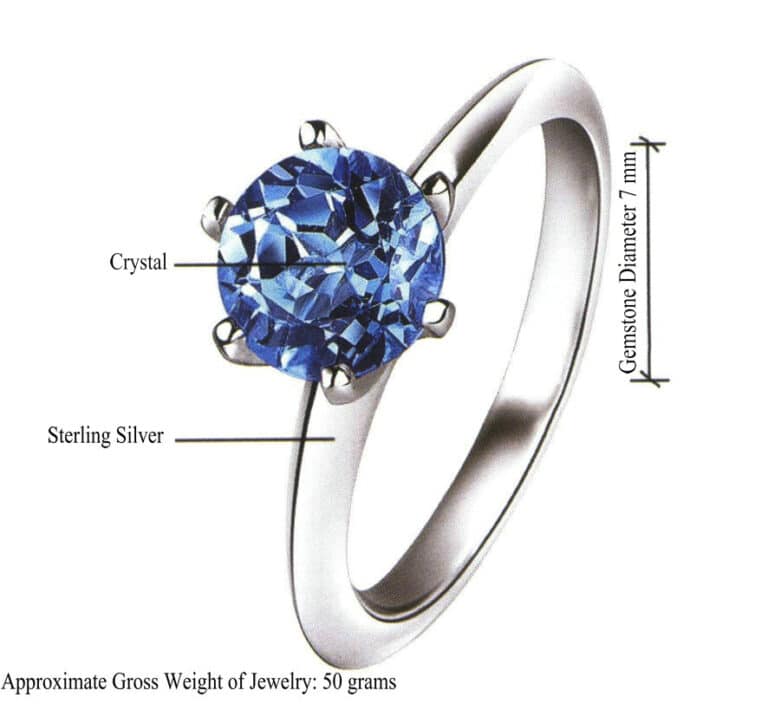
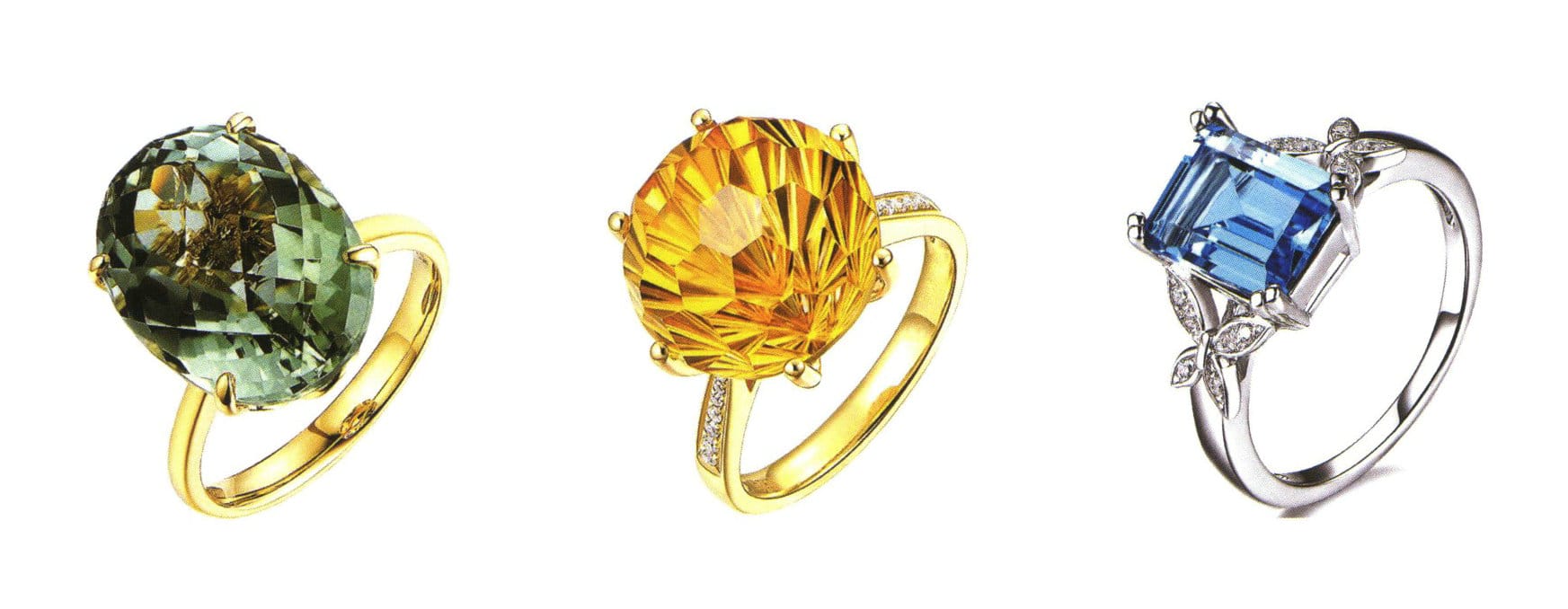
Ring-wearing methods and meanings: Wearing on the thumb symbolizes power, but generally, rings are not worn on the thumb; wearing on the index finger represents the desire to marry but not yet married, symbolizing an increase in romantic luck; wearing on the middle finger represents being in a romantic relationship, symbolizing the establishment of prestige; wearing on the ring finger represents being engaged or married, symbolizing protection against financial loss and bad people; wearing on the little finger represents being single or divorced, symbolizing protection against financial loss and bad people.
Ring purchasing tips: For fingers that are slender and fair, any color and style of ring are suitable, making it the best hand shape for wearing rings; for thick fingers, medium-sized diamond rings, jade rings, or gemstone rings are appropriate, while small or overly large rings are not suitable, as they can create a contrast that gives a clumsy impression; for dainty fingers, delicate rings can make them appear more graceful and cute, while large rings are not suitable; for fingers with prominent joints, irregularly shaped rings are suitable; for fingers with darker skin, it is not suitable to wear cool-toned rings like emeralds and jade, while warm-toned rings like rubies and yellow sapphires are more appropriate.
4. Bracelet and Bangle
Bracelets and bangles are worn on the wrist and are commonly made from silver, gold, stones, crystals, leather, and wood. They have common designs, including strap styles and decorative styles.
Next, we will introduce the materials, sizes, quality, and common styles of bracelets and bangles.

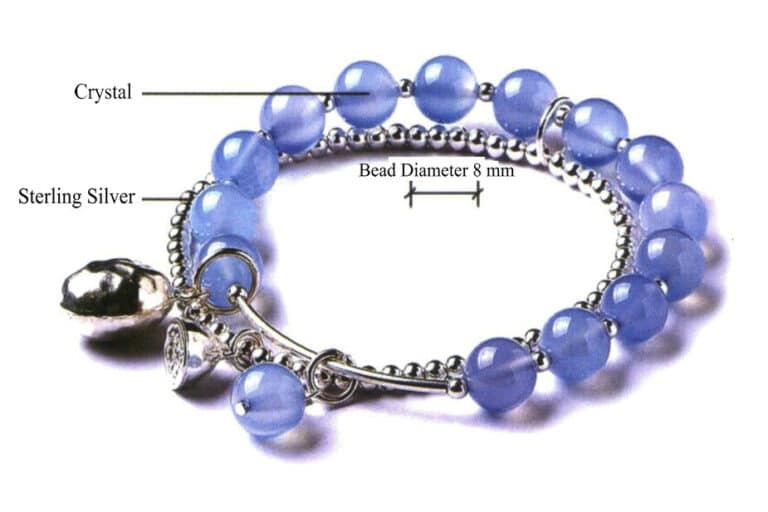
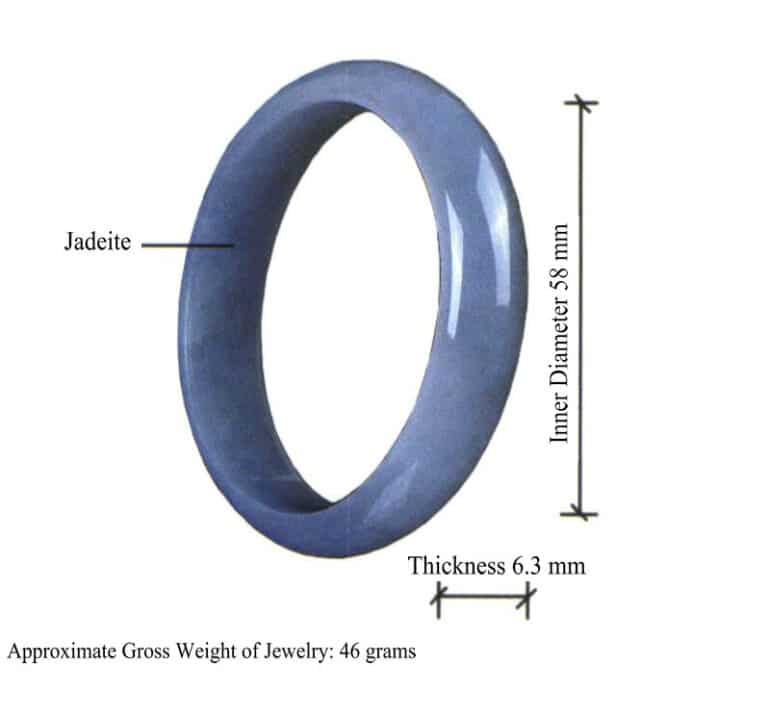
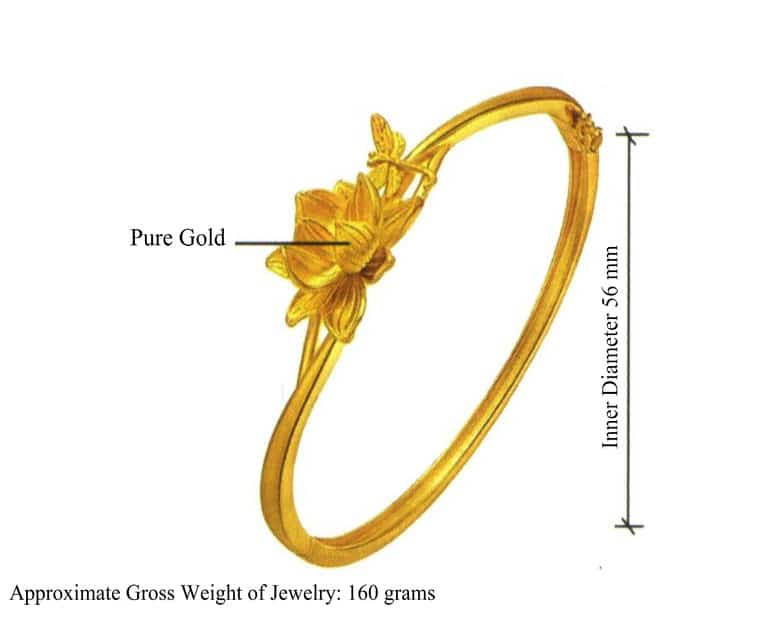

Bracelet matching tips: For those with slender wrists and less prominent bones, any basic or themed bracelet style is suitable; for those with slender wrists but prominent bones, wearing two basic bracelets is more appropriate to create a softer look; for those with fuller wrists and less prominent bones, slightly wider styles are suitable; for those with fuller wrists and prominent bones, wearing personalized or themed bracelets can divert attention and effectively conceal the shortcomings of the wrists.
5. Brooch
A brooch, also known as a corsage or pin, is a decorative item that can be pinned to clothing and worn on the chest. It can be worn year-round. Wearing a brooch can enhance beauty and can be matched with clothing and jewelry, visually improving the overall aesthetic effect.
Brooches come in various styles, with common design elements including animals, plants, zodiac signs, geometric shapes, gemstones, and bows. Next, we will introduce the materials, sizes, quality, and common styles of brooches.



Brooch matching tips: The use of a brooch should be matched according to the texture and color of the clothing, ensuring overall harmony and unity. The choice of brooch varies with the seasons; generally, lightweight brooches are suitable for summer; green and golden yellow brooches that match the colors of nature are suitable for spring and autumn; and in winter, more exquisite, larger, and luxurious brooches are appropriate.
In addition, the position of the brooch is also very important. For collared clothing, the brooch should be worn on the left side; for non-collared clothing, it should be worn on the right side; if the wearer’s hairstyle is tilted to the left, the brooch should be worn on the right side, and vice versa; if the wearer’s hairstyle is tilted to the left and the clothing has a collar, the brooch should be worn on the right side of the collar. In other cases, the brooch should be positioned on the horizontal line between the top two buttons of the garment.
6. Hair Accessories
Hair accessories are decorative items worn on the head and are important in women’s styling design. Many hair accessories include hairpins, clips, headbands, hair baskets, hair ties, and combs. Next, we will introduce the materials, sizes, quality, and common styles of hair accessories.
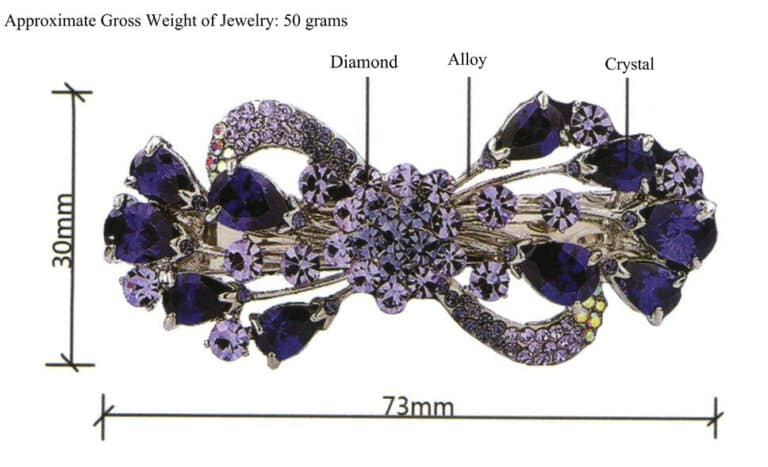
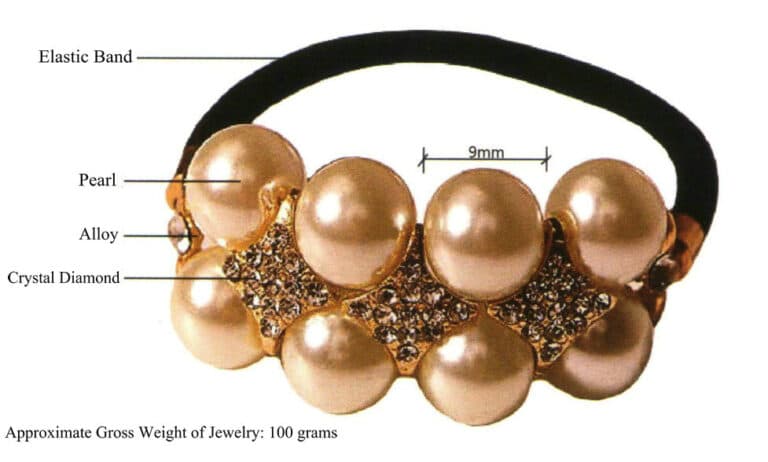
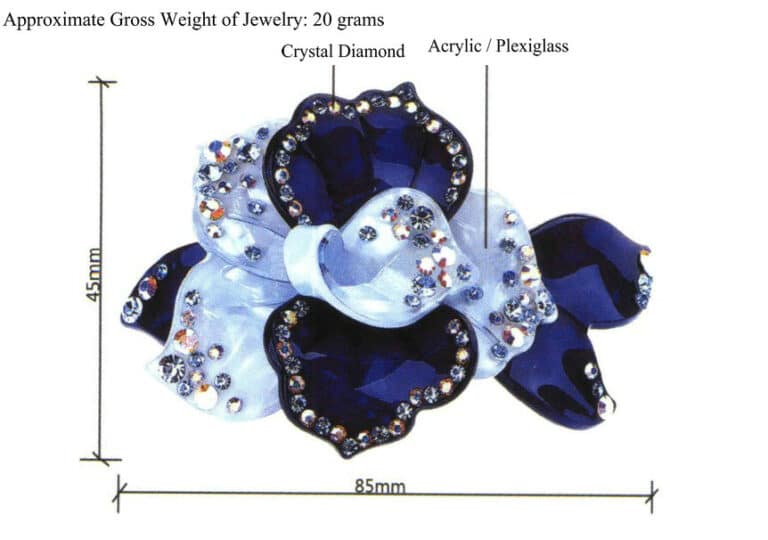
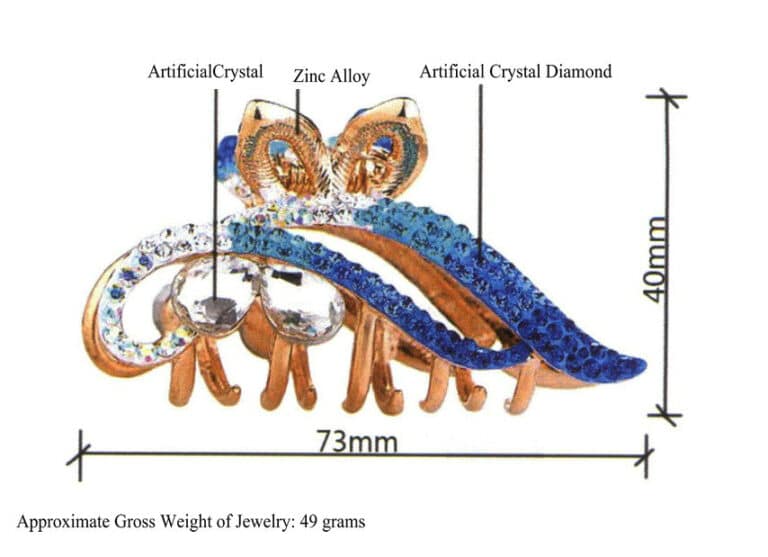
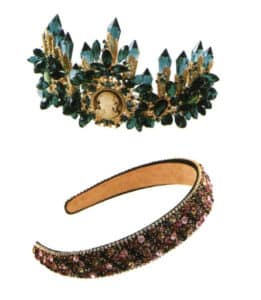

Hair accessory matching tips: A refreshing bun paired with a sequined bow hairpin can create a lovely and elegant look, suitable for newcomers in the workplace; medium-length French curls with a knitted floral hairpin can create a classical and elegant style, suitable for women aged 26~30; wavy long hair with a sequined bow hair clip can create a fashionable and charming look, suitable for women aged 29~33; a BOB straight hairstyle with black and white bow hair clips can create a youthful and age-reducing style, suitable for women aged 27~31; a side ponytail with a black floral hairpin can create a gentle and lovely look, suitable for women aged 24~29 (the age divisions here do not have clear boundaries, and overlapping age ranges are normal).
Section III Types of Gemstones
1. Diamond

2. Ruby

3. Sapphire

4. Emerald

5. Chrysoberyl Cat's Eye
The chrysoberyl cat’s eye, also known as golden-green gemstone, has a hardness of 8.5, making it the third hardest gemstone after diamond and ruby. Common colors include greenish-yellow, honey yellow, and yellow-brown, with deep honey yellow being the best. It is mainly produced in Sri Lanka. Its golden color not only gathers wealth but also strengthens one’s beliefs and helps in career development.

6. Opal

7. Aquamarine

8. Spinel

9. Olivine

10. Tourmaline

11. Topaz

12. Moonstone

13. Pearl

14. Other Types of Gemstones
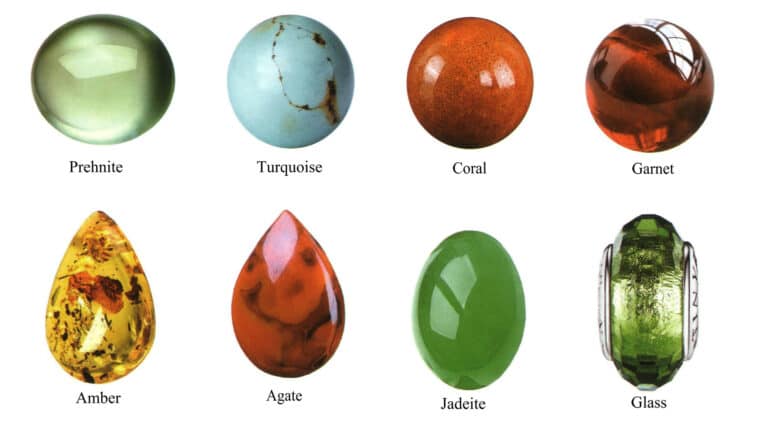
Section IV Maintenance of Jewelry
Generally, high-hardness materials such as diamonds, emeralds, rubies, and sapphires can be cleaned of dirt with clean water or cleaning solution, and then the moisture can be absorbed with a dry cloth.
For medium-hardness materials like jade and garnet, a soft-bristle brush can be dipped in a cleaning solution to gently scrub away stains, then absorb the dirty water with absorbent paper or gauze, and finally, use alcohol mixed with water on a soft cloth to gently rub, and let the cleaned jewelry air dry in a cool place.
Low-hardness materials such as amber, coral, and turquoise, which have high water absorption, must not be washed with water, as they may crack when heated. Additionally, cleaning with alcohol, oil, or vinegar is not allowed. The correct method is to gently wipe away stains with a velvet cloth, but care should be taken to minimize friction to avoid scratches.
Pearls are a special material that requires extra attention compared to the materials above. Due to their weak resistance to acids and bases and lack of durability, they should be protected from sun exposure, rain, and sweat daily. The correct maintenance method for pearls is gently wiping them with a soft cloth afterward.
Section V The Origin of Jewelry
Although it is difficult to accurately trace the origin of jewelry, humans have been aware of the need to decorate and beautify themselves since the Stone Age, leaving behind items such as animal bones and stone necklaces. In addition, natural objects such as animal teeth, horns, shells, feathers, and plant fruits and seeds, with their shapes and colors, were important elements of early body adornments. Besides their decorative and beautifying functions, these ornaments could also be amulets to ward off disasters and bring good fortune, worn to seek success in hunting and personal safety.
Research has shown that the forms of early primitive jewelry were mainly necklaces, waist ornaments, hip ornaments, wrist ornaments, and head ornaments. In the origin and development of jewelry, religious and social functions are two important driving forces, which evolved based on human physiological instincts.
With the development of the times and the advancement of technology, the materials, colors, shapes, and craftsmanship of jewelry have all progressed, with great potential for further enhancement. Jewelry has become a common decorative item in people’s daily lives. Due to the different materials, colors, styles, and craftsmanship of jewelry, they evoke different feelings, thus endowing them with varying meanings. However, people need to appreciate the pure essence of original culture, not to focus on the price of decorative items, but to value sincere, warm, and romantic expressions of emotion.

Section VI Trends in Jewelry Design
Like other industries, the jewelry design industry must continuously create new products with personality, creativity, and fashion based on classics to keep up with the times and meet consumer demands. Next, we will analyze the trends in jewelry.
When purchasing jewelry, young people focus on personal preferences and a reasonable sense of hierarchy. Customized jewelry is also a popular trend, as this method allows consumers to participate in the design of the jewelry and even create their unique style, giving the jewelry special meaning and better facilitating emotional expression for consumers.
Another fashionable design is mixed metal jewelry, which can change color according to consumer preferences. Coupled with unique shape designs, it meets various needs of consumers and successfully attracts those who love new designs. The uniqueness of jewelry design is also reflected in design elements; elements from nature, such as fruits, plants, animals, and stones, give a friendly feeling, and consumers deeply love their unique shapes.
In addition to the popularity of the jewelry itself, the way it is worn also needs to keep up with the trends. The avant-garde “asymmetrical wearing” style suits women who enjoy mixing and matching. Wearing two different styles of earrings can create a unique beauty, giving an unbalanced feeling. In the latest earring designs 2017, elements such as metal, leather, plastic, lace, and fabric will be popular.
Analyzing based on the type of jewelry, the strong, minimalist, and modern metal style is suitable for modern women; sexy and elegant chokers can draw attention; abstract geometric elements can evoke the artistic trends of the 1960s; religious patterns like crosses can reflect a strong retro feel. These Renaissance elements, combined with modern accessories, have become one of the popular trends in the design world. In contrast, the Baroque court style of jewelry features exaggerated shapes, complex designs, precious materials, and stunning visual effects, creating a powerful aura that gives a luxurious and elegant feeling. It is the most popular style in the brand’s custom series. These will be popular elements in 2017, and consumers can purchase various jewelry accessories in advance.
Next, examples of jewelry design trends for 2017 will be provided.
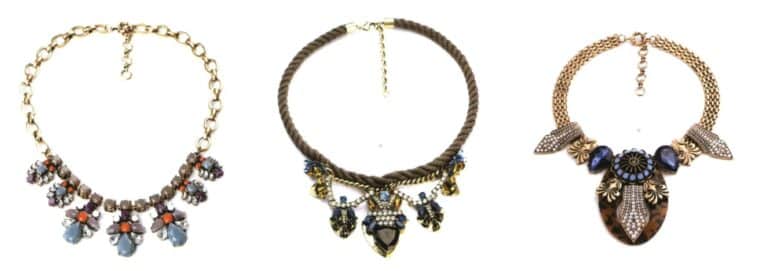




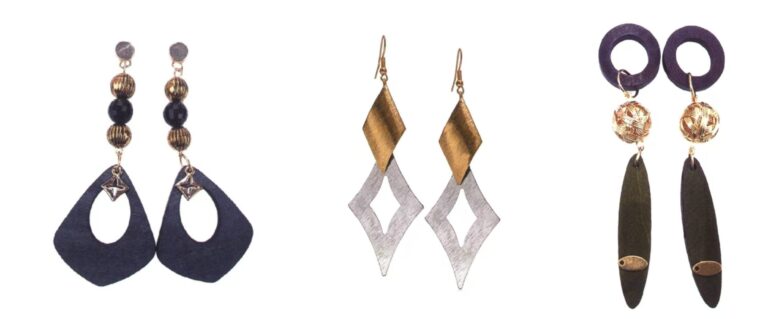
Section VII Identification of Naturally Generated and Artificially Processed Items
The jewelry in the accessory store is dazzling, and if you can’t take your eyes off it, you might be worried about being deceived by the authenticity of the gemstones. Next, we will introduce methods to distinguish between natural and synthetic gemstones. Let’s see if we can solve some of your concerns!
(1) Color comparison: Natural gemstones have a more natural appearance, while synthetic gemstones are often overly modified in color and do not look as natural.
(2) Clarity: Clarity refers to the transparency and cleanliness of the gemstone. Synthetic gemstones have fewer defects and are internally clean, while natural gemstones often have more defects and may contain impurities or flaws.
(3) Craftsmanship: Natural gemstones, after being carved and polished, have a smooth surface and strong light reflection and refraction properties, whereas synthetic gemstones are generally rougher in lines and edges and tend to be rounded.
(4) Weighing: This is applicable for identifying gemstones of the same volume; generally, the heavier ones are natural gemstones.
(5) Light exposure: Identification can be done through lighting and observation methods; typically, the light can reveal the internal flaws of natural gemstones.
Section VIII Size Correspondence Table
1. Ring Sizes
The standard sizes for ring bands are divided into American and Hong Kong styles, with the domestic market mostly adopting the Hong Kong style. The Hong Kong ring size numbers range from 7 to 24 (including size 7 and size 24), where size 7 is the smallest and size 24 is the largest, encompassing both men’s and women’s sizes. Generally, the women’s ring size number is 7 to 15, while the men’s ring size number is 16 to 24. The most common choices are women’s size of 12~13 and men’s size of 18~20.
The following will analyze ring sizes and their corresponding inner circumference and inner diameter through “Table 1-1 Ring Size Comparison Table”.
Table 1-1 Ring Size Comparison Table
| Ring Size (Number) | 7 | 8 | 9 | 10 | 11 | 12 | 13 | 14 | 15 |
|---|---|---|---|---|---|---|---|---|---|
| Inner Circumference (mm) | 46 | 47.5 | 48 | 50.5 | 52 | 53 | 53.5 | 55.5 | 56.5 |
| Inner Diameter (mm) | 14.5 | 15.1 | 15.3 | 16.1 | 16.6 | 16.9 | 17.0 | 17.7 | 18 |
| Ring Size (Number) | 16 | 17 | 18 | 19 | 20 | 21 | 22 | 23 | 24 |
| Inner Circumference (mm) | 57 | 57.5 | 58 | 59 | 61 | 62 | 63.5 | 64 | 66 |
| Inner Diameter(mm) | 18.2 | 18.3 | 18.5 | 18.8 | 19.4 | 19.7 | 20.2 | 20.4 | 21.0 |
Just understanding ring sizes is far from enough; learning how to correctly measure the circumference of your finger is a necessary skill. You can choose the ring size that suits you best by mastering the daily measurement methods. Next, we will explain the correct methods for measuring finger size.
(1) Prepare tools such as a thin string, pen, scissors, and ruler. Note that you should not use a too thick or elastic string to avoid significant errors.
(2) Wrap the thin string around your finger once and mark the overlapping point with a pen. Be careful not to wrap it too tightly, as the knuckle is slightly thicker than the part where the ring will sit.
(3) Measure the circumference with a ruler, then refer to the ring size chart to find the appropriate size.
ヒント
This measurement method can also replace the thin string with a strip of paper. You can also go to a physical store and ask a professional for measurement to ensure measurement accuracy.
2. Necklace Size
Table 1-2 Common Necklace Sizes and Wearing Positions
| Common Necklace Sizes | Examples of Common Necklace Positions | |
|---|---|---|
| 番号 | Necklace Length (cm) | |
| 1 | 35 |
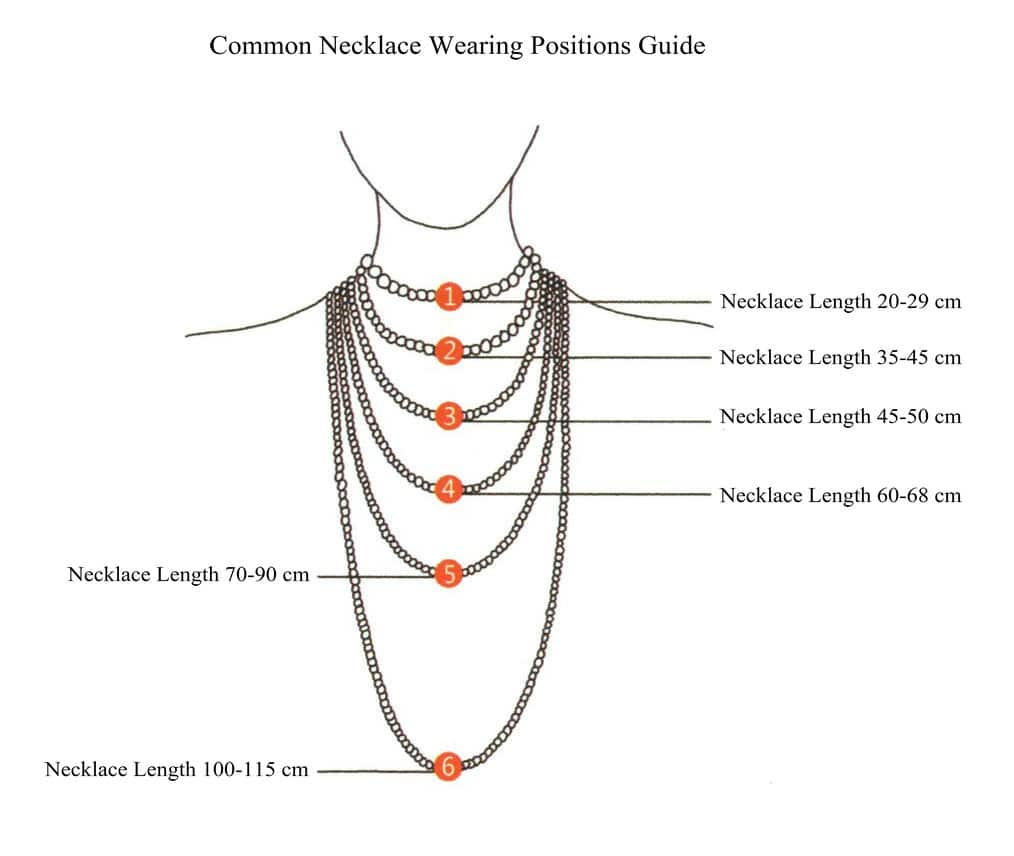
|
| 2 | 40 | |
| 3 | 45 | |
| 4 | 50 | |
| 5 | 60 | |
| 6 | 65 | |
| 7 | 70 | |
ヒント
This chart uses women as an example for reference only. Due to differences in gender, body shape, etc., the necklace sizes and wearing effects may vary. Additionally, the data on this table’s left and right sides are separate and do not correspond to each other.
Generally, for women’s necklaces, a chain length of about 33 cm can wrap around the base of the neck like a choker, suitable for pairing with all styles of clothing; a necklace of about 40 cm hangs just below the throat and is the most popular size for women, suitable for deep necklines; a necklace of about 46 cm hangs slightly below the collarbone, suitable for business, casual, high collars, and pullover styles. For men’s necklaces, a necklace of about 40 cm fits closely to the base of the neck and is considered a small size; a necklace of about 50 cm fits closely to the collarbone and is considered a regular size; a necklace of about 90 cm hangs at the chest level.
3. Bracelet Sizes
Table 1-3 Bracelet Size Comparison Table
| Wrist Circumference(mm ) | Inner Diameter (Open Bracelet) (mm) | Inner Diameter (Closed Bracelet) (mm) |
|---|---|---|
| 140 | 5.0 〜5.2 | 5.1 〜5.3 |
| 150 | 5.2 〜5.4 | 5.3 〜5.5 |
| 160 | 5.5 〜5.7 | 5.6 〜5.8 |
| 170 | 5.8 〜6.0 | 5.9 〜6.1 |
| 180 | 6.0 〜6.2 | 6.1 〜6.3 |
ヒント
Generally, the size of each person’s left and right hand is slightly different, so the measurements are based on the hand that must be worn.
Wrap the measuring tape around the thinnest part of the wrist, ensuring it fits snugly without being too tight or loose, and measure the circumference. However, generally, for comfort, you can add or subtract 1 mm based on personal preference from the measured value to get the most suitable inner diameter for the bracelet.
Section IX How to Learn Jewelry Design Sketching
1. Steps to Learn Jewelry Design Sketching
The drawing steps generally include preparation, sketching, completing the final draft, coloring, and adjustments.
(1) First, you must find and collect relevant materials based on your needs, such as text, reference images, etc. Below are displays of images related to jewelry design.









(4) Before coloring, consider the overall tone of the picture, the local color contrasts, and even the overall brushstroke application and variations in detail brushstrokes so that you have a clear idea. Then, according to the drawing order of the black and white line draft, color from light to dark, paying attention to the texture and light and shadow representation of the objects, and trying to avoid letting the colors seep out of the object’s outline.
(5) Use flexible and varied brush strokes to apply color overall. After determining the overall tone, you can adjust the entire picture appropriately to ensure the colors are harmonious and unified.
(6) Adjust the balance and density of the composition, paying attention to the changes in object colors. Add ambient colors, enhance the blurred structural lines due to coloring, use a highlight pen to increase the highlight and glowing points of the objects, and depict the reflective parts.
Below are examples of watercolor coloring in jewelry design.
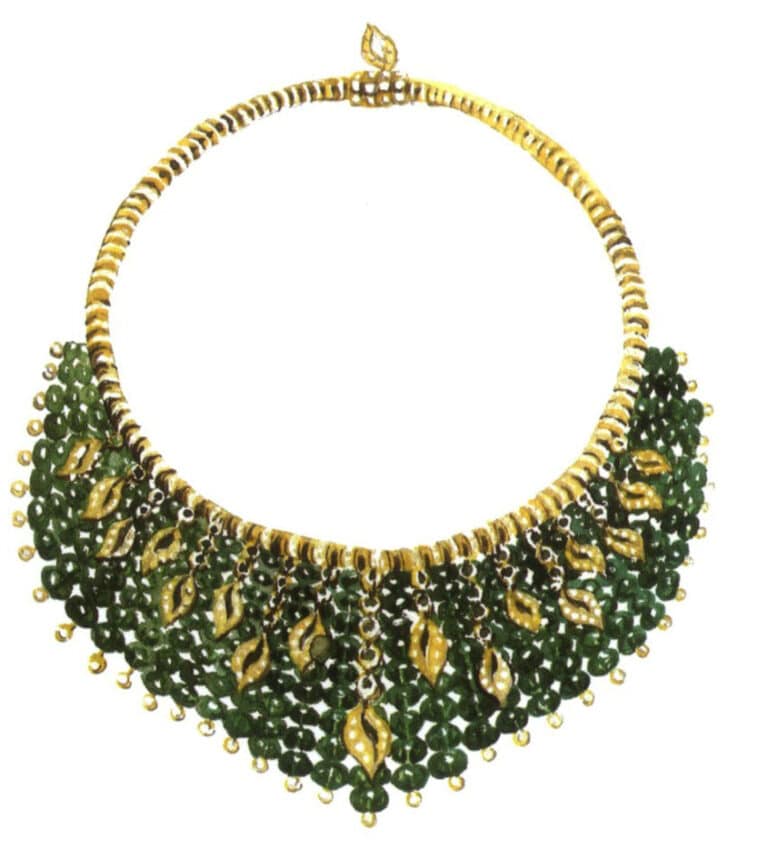
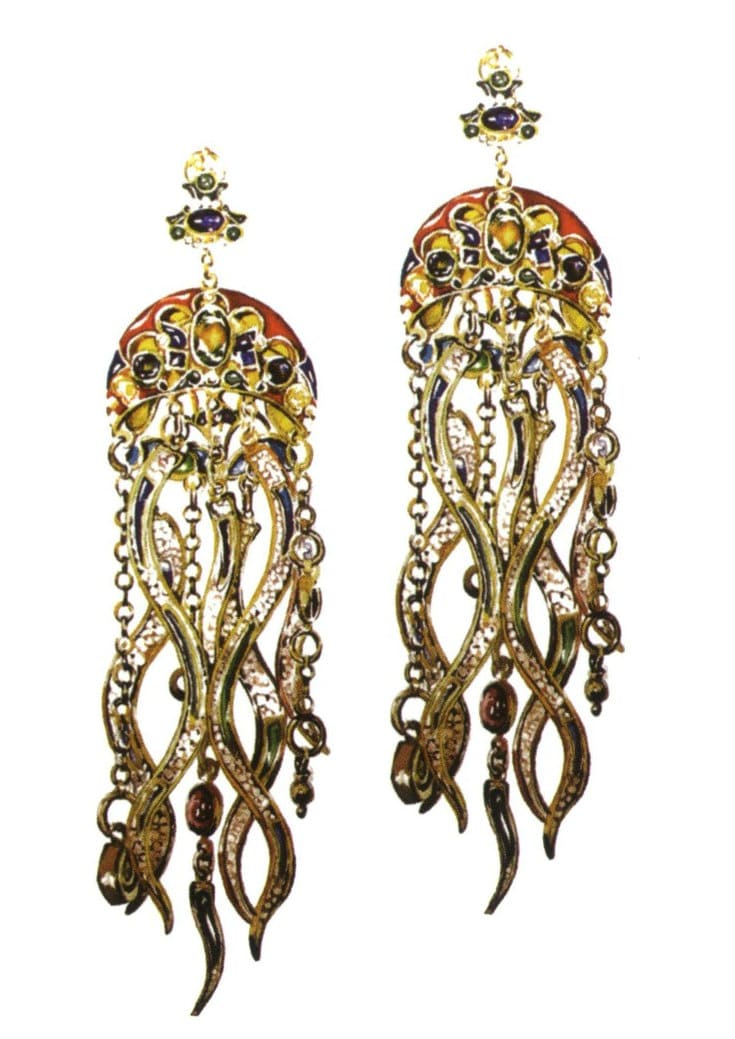
2. Mastering the Basic Learning Methods of Hand Drawing
Beginners should establish a correct learning perspective and possess a good learning attitude. First, in daily study, one should develop the habit of sketching to cultivate their design awareness and ability. Practice diligently and persistently to develop accurate shapes, concise lines, and strong summarization skills in sketching fundamentals. During the learning process, follow a scientific learning method: start with the basics, then create; being eager for quick success will not lead to truly mastering hand drawing.
(1) Copying is very important. Copying others’ works is the most direct and effective way to learn from their experiences, observations, and expressions. When copying, one must clarify one’s learning objectives and direction and think critically rather than just blindly copying. One can copy as a whole or focus on specific parts, emphasizing the learning of form, space, and expression techniques. When learning to shape forms, it is best to compare one’s copied works with real objects, observing and analyzing how others grasp and handle the large areas and details of forms, what can be ignored, and what needs to be explored in depth. When drawing by hand, it is advisable to focus on training in line work, as it greatly aids in accurately grasping forms. Below, references for line drawing in jewelry design will be presented.
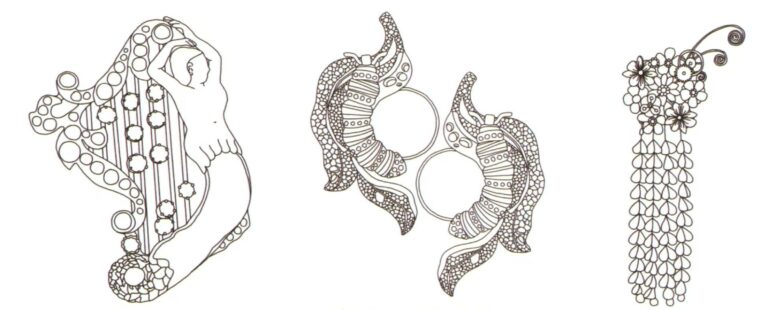
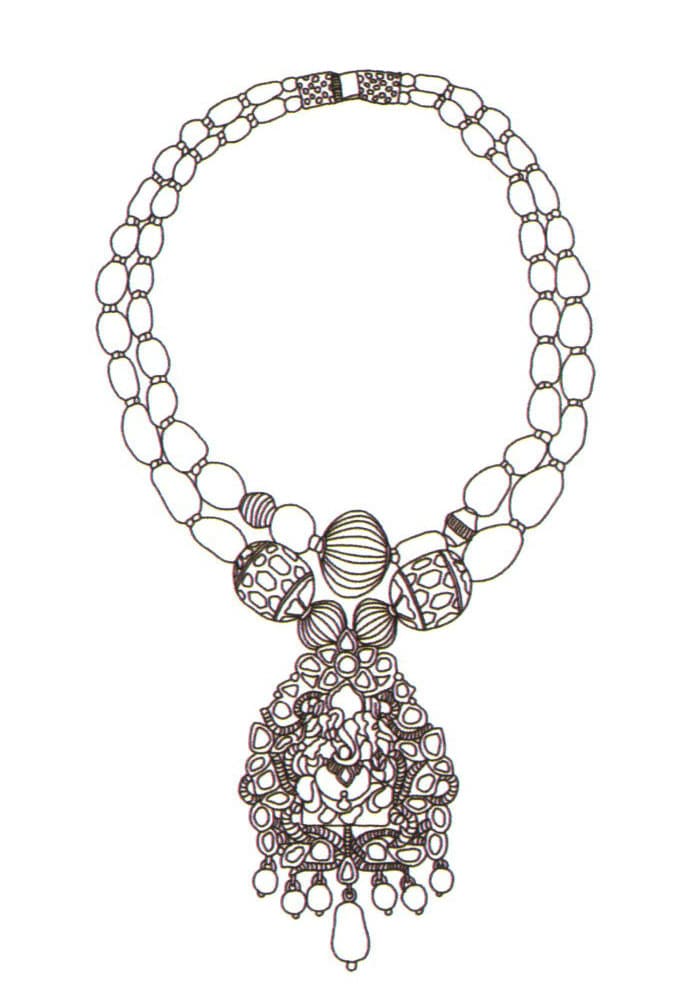
References for line drawing in jewelry design 2
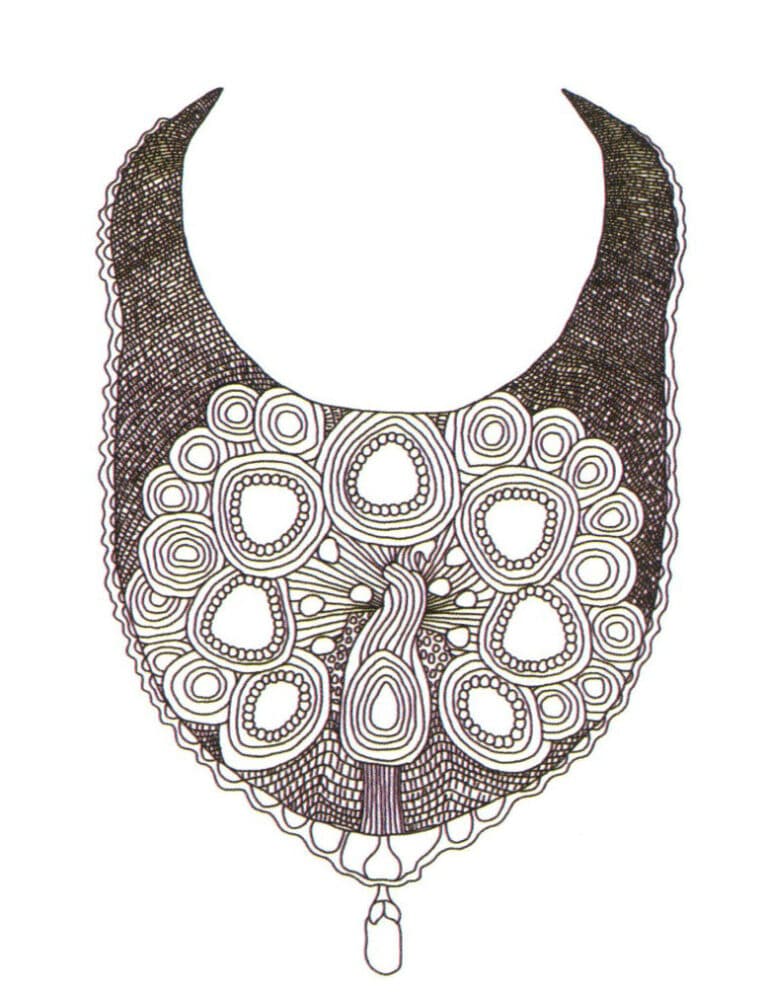
References for line drawing in jewelry design 3
(2) Sketching is essential. Before starting to draw, the artist must be interested in the subject being drawn so they can fully engage in observation and carefully analyze the relationships of the shapes, accurately depicting the structure. During the drawing process, attention should be paid to the overall relationships, such as light and shadow, and the primary and secondary elements, without being distracted by details.

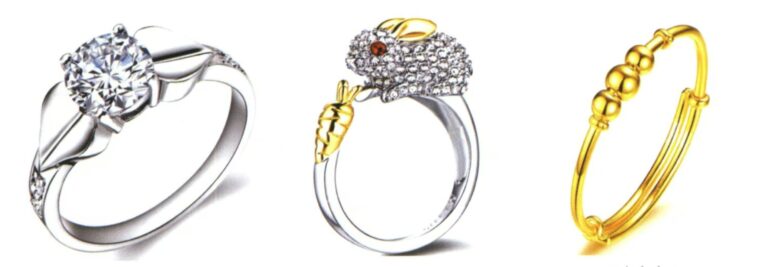
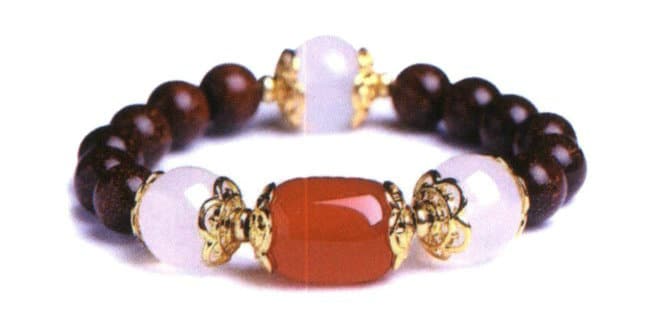
Sketching reference 3
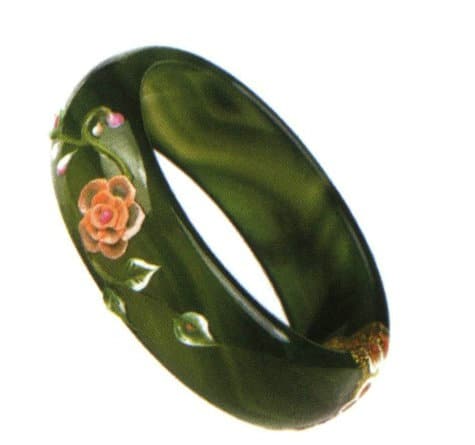
Sketching reference 4
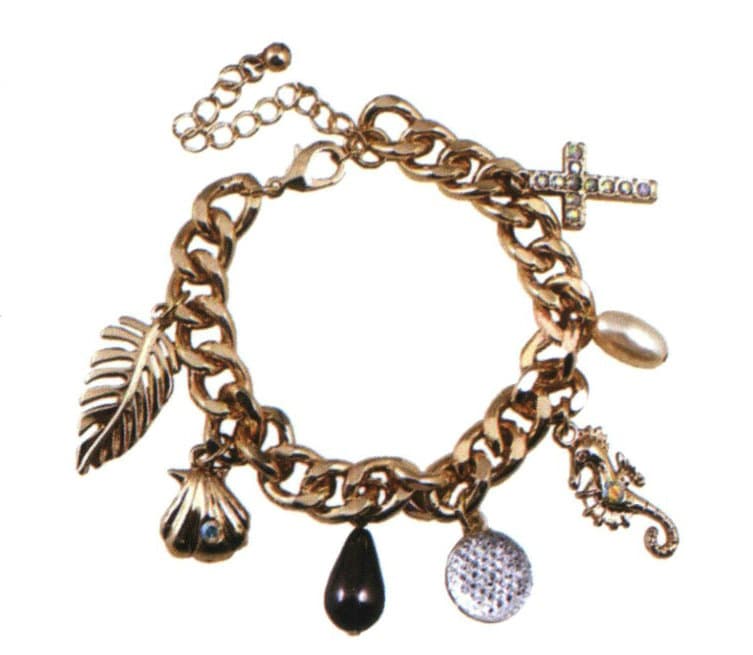
Sketching reference 5

Sketching reference 6

Sketching reference 7
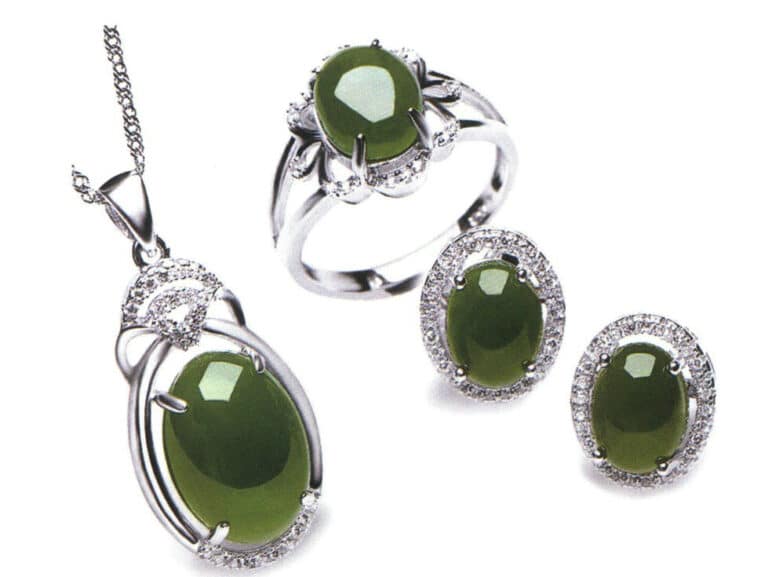
Sketching reference 8

Sketching reference 9
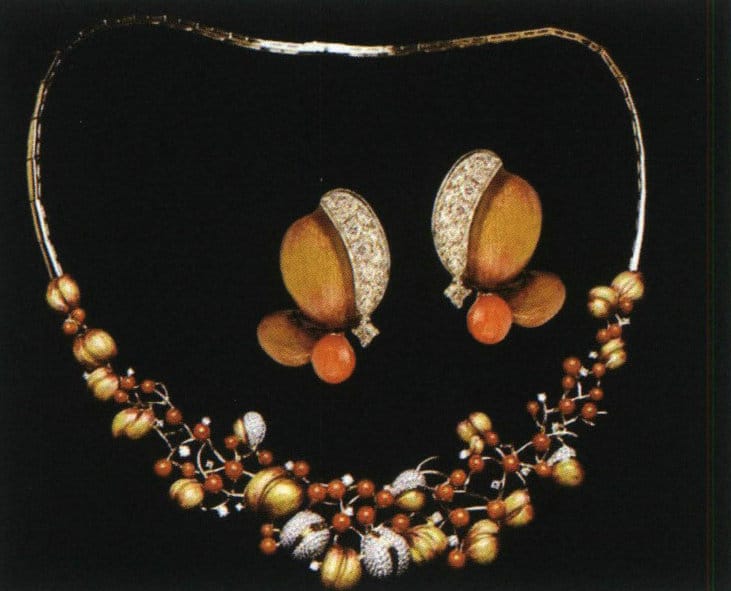
Sketching reference 10

コピーライト @ Sobling.Jewelry - ジュエリー カスタムジュエリーメーカー、OEMおよびODMジュエリー工場





